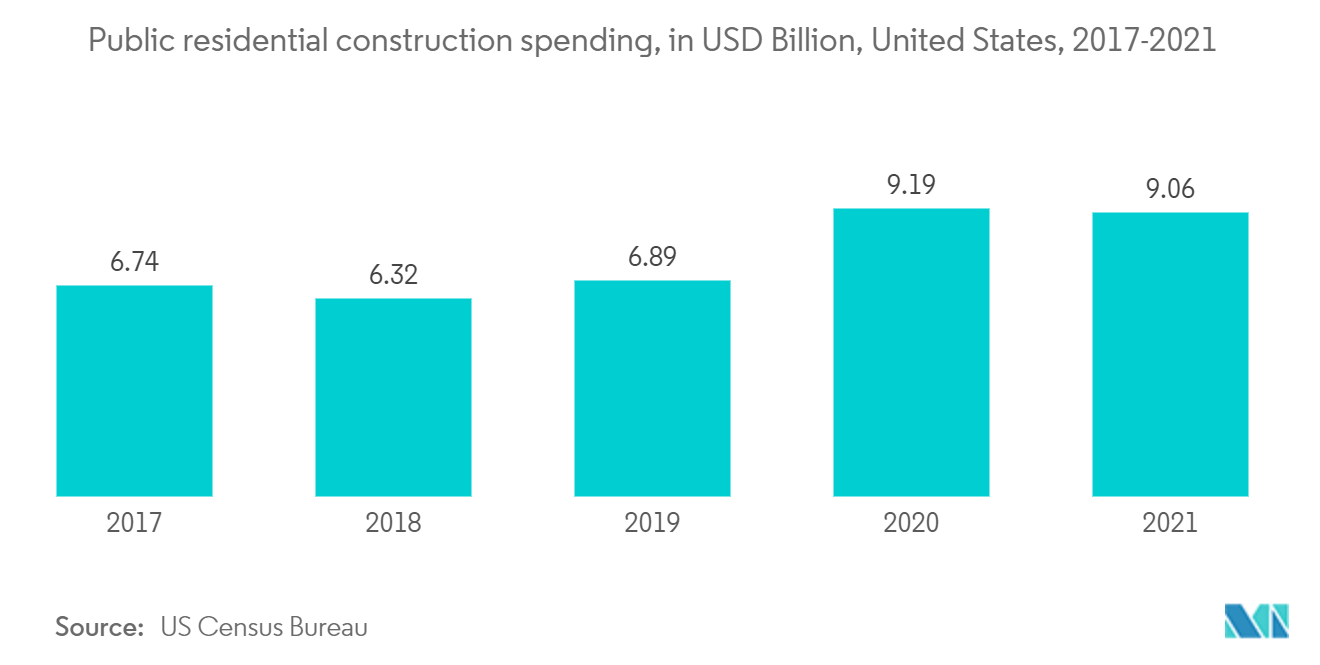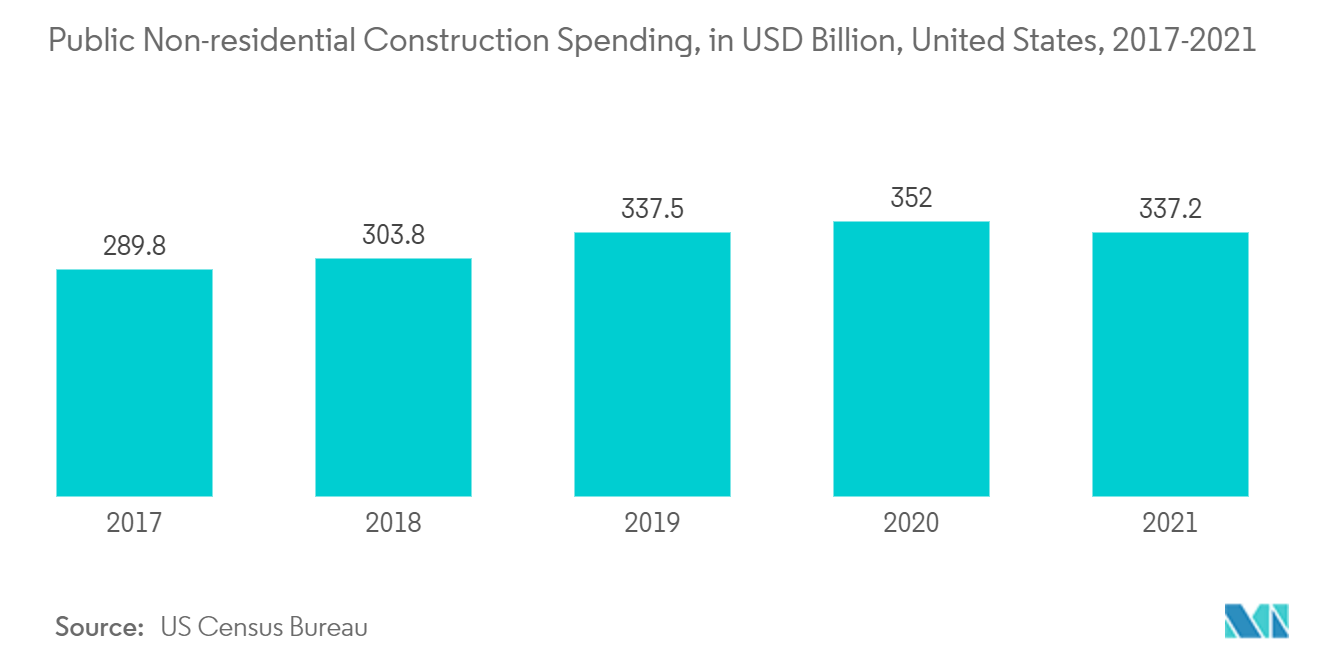Market Trends of North America Gypsum Board Industry
This section covers the major market trends shaping the North America Gypsum Board Market according to our research experts:
Increasing Application in Residential Sector
- Gypsum board is a covering material used in residential structures for interior walls and ceilings. Furthermore, the product is employed to construct lightweight and long-lasting walls. The low cost and shorter building time are factors boosting the demand for these boards in the residential market. Apartments, bungalows, and villas are becoming increasingly popular in North American countries owing to rapid urbanization.
- Gypsum goods such as gypsum boards, panels, finish compounds, and accessories are commonly used in residential structures. Two types of gypsum boards are used in residential construction - the standard and fire-resistance-rated boards. The second type is used where more excellent fire resistance is required. These include building fire-rated separations between garages and occupied spaces or between living rooms and corridors.
- The rising trend of home construction, rapid urban migration in significant economies, higher government expenditure in the real estate market for residential construction, and growing demand for high-class residential homes are the primary drivers of the market studied.
- Furthermore, growing real estate values, particularly the building of single-family houses and multi-story apartments in emerging nations, propel the gypsum industry. The market is flourishing due to the rapidly expanding urban population and increased housing demand.
- According to the US Census Bureau, in 2021, public residential construction spent more than USD 9 billion on residential construction projects. Also, the number of housing units in the United States is increasing yearly, and there were roughly 142 million housing units in the country in 2021. It was a one-million-unit rise from 2020 when the overall housing stock was 140.8 million units.
- In January 2022, James Hardie Building Products Inc. announced the results of a survey of 1,000 US homeowners, revealing the driving causes behind the COVID period home renovation boom. The poll shows how homeowners' anxieties about extreme weather affect their home improvement spending and choices.
- Furthermore, privately owned housing units authorized by building permits in the United States were at a seasonally adjusted annual rate of 1,873,000 in December 2021, representing a 9.1% increase over the revised November 2021 rate of 1,717,000 and a 6.5% increase over the December 2020 rate of 1,758,000.
- All the factors above are expected to drive the residential segment, further enhancing the demand for gypsum boards in North America during the forecast period.

The United States is Anticipated to Hold a Major Share of North America
- The growing construction industry fueled by rapid urbanization and growing household income is expected to generate strong demand for gypsum boards in the United States.
- Gypsum boards are commonly used in offices, shopping malls, restaurants, and lobbies because they are simple to install and provide high-quality aesthetic effects in ceilings and coatings. Gypsum board is used in both residential and commercial locations in the United States since it is lightweight and easy to install.
- According to US Census Bureau, the United States includes one of the world's largest construction industries, which accounted for USD 1.6 trillion in 2021 and is expected to grow further over the forecast period.
- According to the US Census Bureau, construction spending in the country was USD 1,639.9 billion in December 2021, up 0.2% from the revised November of USD 1,636.5 billion. The value of public residential construction spending in the United States rose significantly from 2002 to 2021. In 2021, the public sector spent over USD 9 billion on residential construction projects,
- Furthermore, construction spending in January 2022 was USD 1,677.2 billion on a seasonally adjusted yearly basis. In February, construction spending in the United States increased by 1.3% compared to a seasonally adjusted annual pace of USD 1.677 trillion in January 2022.
- Residential home construction, comprising privately owned dwelling units permitted by building permits, was at a seasonally adjusted annual pace of 1,899,000 in January, according to the Federal National Mortgage Association (Fannie Mae). It was 0.7% higher than the revised December rate of 1,885,000 and 0.8% higher than the January 2021 rate of 1,883,000.
- According to The American Institute of Architects (AIA) Construction Consensus Forecast Panel, nonresidential building construction spending will rise to 5.4% in 2022 and 6.1% in 2023. AIA predicts that nonresidential building development in the United States will increase by 3.1% in 2022. Hotel development was anticipated to increase by 8.8% in 2022, while office space construction might be increased by 0.1%.
- According to the US Census Bureau, public nonresidential construction spending in the United States increased, reaching over USD 337 billion in 2021, compared to USD 352 billion in 2020.
- Furthermore, the country is engaged in many remodeling operations, likely enhancing market demand for gypsum boards. According to the Harvard Joint Center for Housing Studies, Americans spend over USD 400 billion per year on house renovations and repairs, which may include the use of gypsum boards.
- Thus, all the above factors will likely increase the demand for the North America Gypsum Board market during the forecast period.


